New York City is full of urban legends. There are the alligators that supposedly stalk the sewers. There’s the pirate who’s said to have buried treasure on Liberty Island. And then there’s the Lesbian and Bisexual Backgammon League.
“I’d heard whispers of this game for so long,” says the photographer Kate Owen, 35. For a year, she’d wondered where the mysterious tournament was held and who exactly was behind it. Then, on Valentine’s Day, she saw an Instagram post by the queer collective GayJoy calling for “a few more artsy gays to play backgammon” that evening. At 7:30 that night she optimistically made her way to the third floor of Bortolami, the contemporary art gallery in TriBeCa, where she’d been directed after responding to the post. “I wasn’t sure if this was going to be the game,” she says. “But as soon as I walked in, I was like, ‘Oh, yeah. This is it.’”
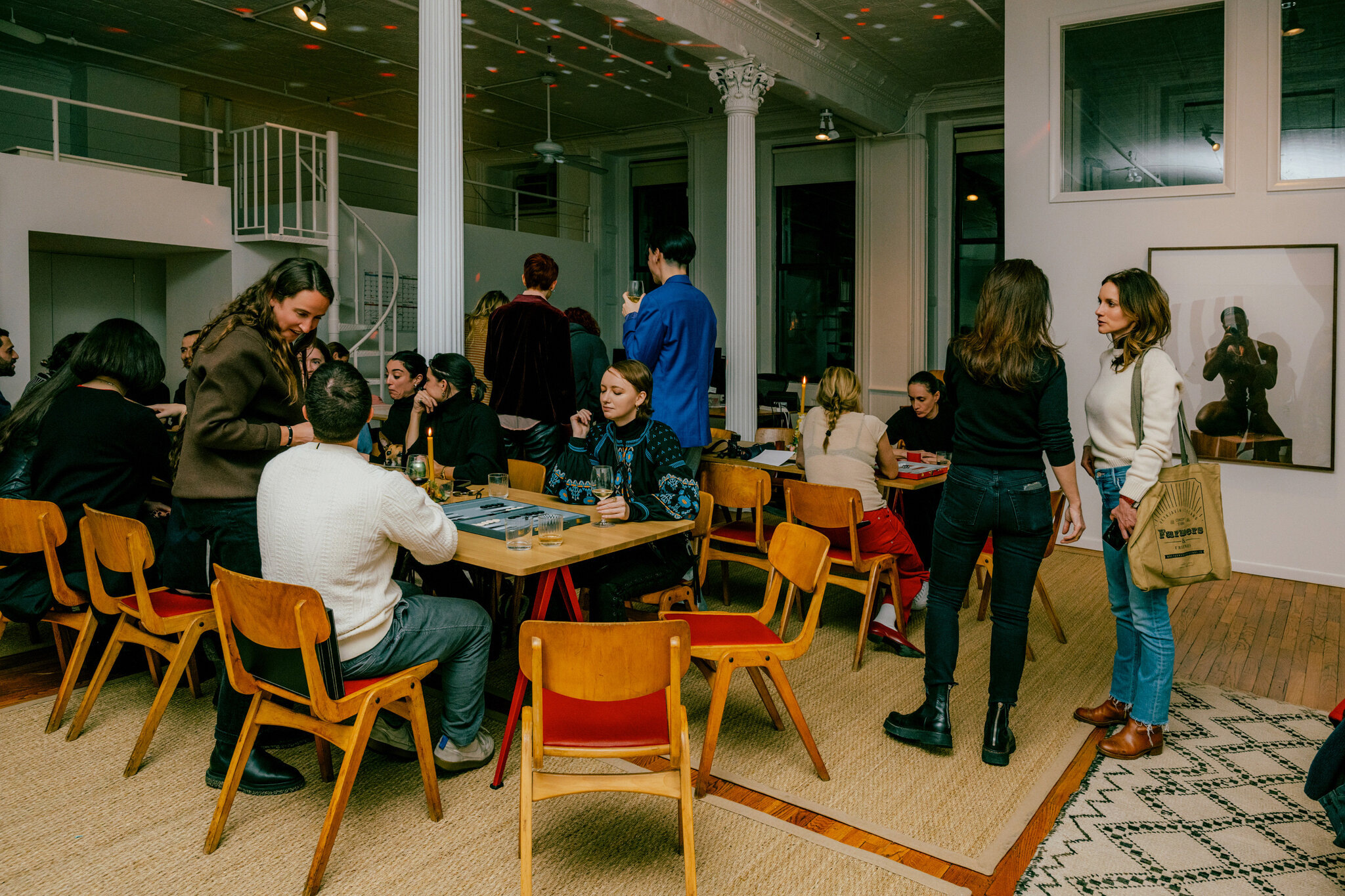
A few dozen women, along with a handful of men and nonbinary folks, were milling around the airy space, sipping wine and rolling dice. Candlelight illuminated rows of backgammon boards atop long tables; Kylie Minogue and Destiny’s Child played in the background.
The Lesbian and Bisexual Backgammon League — known as L.B.B.L. for short — formed in 2017 after Ellen Swieskowski, 35, the founder of the gallery-guide app See Saw, struck up a conversation with Hester Hodde, 36, an interior designer, at the West Village lesbian bar Cubbyhole. Swieskowski had been introduced to backgammon the previous summer and had the zeal of a convert; growing up, Hodde played with her family on ski trips. “It was a fun, jokey idea to bring people together,” Swieskowski says.
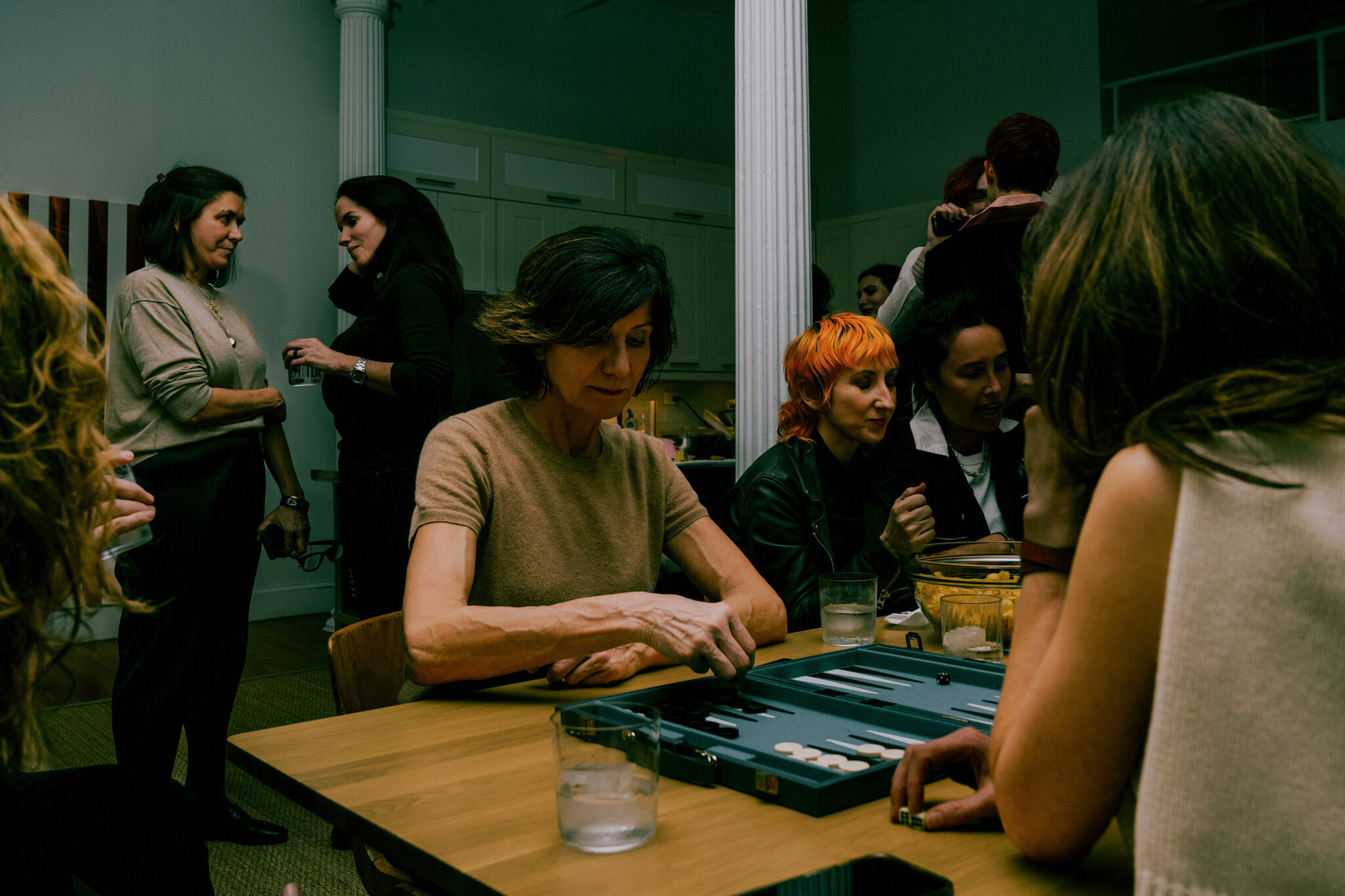
Over the years, the league has grown to include a range of art-world figures as well as start-up founders, architects and people from other creative industries. Every mega-gallery in New York is often represented by at least one staff member at the gatherings, which are organised via WhatsApp and typically held every five or six months. The artists Jennifer Packer, Jenna Gribbon and Sable Elyse Smith are regulars. (At an L.B.B.L. session last summer, the room was buzzing over the appearance of the then newly coupled artists Nicole Eisenman and Ambera Wellmann.)
In the highly stratified art world, L.B.B.L. is refreshingly nonhierarchical. It’s the kind of place where the influential art adviser Amy Cappellazzo, 56, might compete against a Chelsea gallery’s receptionist. Or where Kel Burchette, 26, the gallerist Larry Gagosian’s former second assistant, faces off with the prominent art dealer Stefania Bortolami, 57. “There are so many parties and events in the art world — we all dread them but we have to do them,” says Bortolami. “This is a way in which people can socialise and there’s zero pressure.”

Backgammon, the rules of which are explained below, is one of the world’s oldest table games. In 2004, archaeologists uncovered the earliest known version — complete with an ebony board and bone dice — in southeast Iran. King Tut was buried with a precursor to the game. In the 12th century, the Crusaders brought a version to Europe, where it became a favoured pastime for clergy and nobility. It had a resurgence in the United States in the 1960s and ’70s, when Hugh Hefner held backgammon parties at the Playboy Mansion.
“There’s Turkish-style backgammon, there’s Italian,” says Ellie Rines, 35, the founder of the gallery 56 Henry and a co-organiser of the latest event (there’s no official host among the group and the responsibility rotates on an informal basis). “What straight men find really funny is the idea that lesbian backgammon is some different playing style that they don’t have access to.” While there aren’t actually any special rules for lesbian backgammon, Rines maintains that it “is kind of a perfect lesbian game — it’s very empathetic. You match the energy of the person across from you and respond to their moves.”

The hosts:
The evening was co-hosted by two friends who happen to be exes, Rines and Bortolami; they dated between 2017 and early 2020. In the league’s early days, Rines says she brought Bortolami to L.B.B.L. tournaments “as part of my courtship process.” On Valentine’s Day, Bortolami — who’s regarded as one of the league’s most formidable players — hung back to let a handful of original members steer the evening. After someone whistled to get the attention of the crowd, the venture capital investor Nicole Ripka, 31, laid out the rules. Players marked their progress on a printed bracket taped to the wall.
The gear:
Backgammon boards come in all shapes and sizes, from cloth versions designed to be unrolled at the beach to large wooden ones. (Burchette says she “impulsively bought a $400 board from Jonathan Adler” after she won her first game.) The board is composed of four quadrants, each with six tall triangles, or “points,” in alternating colors. The two players each get 15 checkers, called “pips,” as well as two dice and a dice cup.
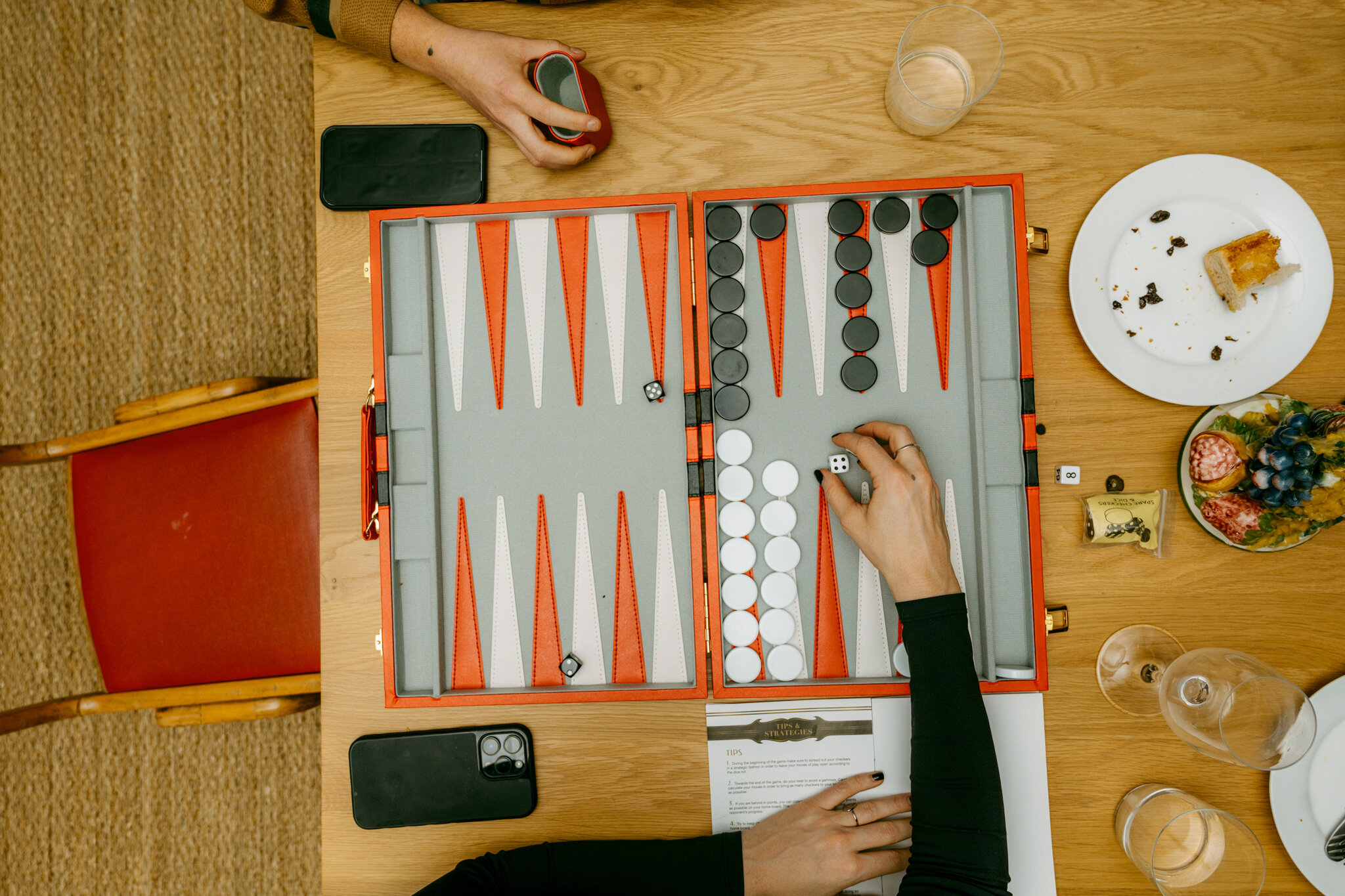
The rules:
You don’t have to be queer to attend L.B.B.L. (Rines clarifies that she is “not a lesbian anymore” and another guest was overheard saying she was “too poor right now to date women.”) To enter the tournament, all you need is an invitation from someone in the group and $30. The game is part luck and part skill, which makes it ideal for newcomers. The goal is to move all 15 of your pieces around the board, into your home quadrant (the section of the board closest to you) and then off the playing surface entirely — the first player to clear all their pieces off the board is the winner. You can move two pieces per turn and you roll the dice to see how many points forward each piece can go; if you roll two of the same number, you get to play each die twice. Players must move their pieces to an “open” point — one that is not already occupied by two or more of the opponent’s pieces. There is a certain level of gamesmanship required: It’s possible, for example, to blockade your opponent or bump one of their vulnerable pips onto the central bar between the two halves of the board, a kind of purgatory.
The betting:
At the most recent tournament, the central pot was worth $570. But side bets abound. During L.B.B.L.’s early days, Bortolami won an upgraded subscription to Swieskowski’s app See Saw worth $500. On Valentine’s Day, one backgammon neophyte, who requested to remain anonymous, asked Hodde, one of L.B.B.L.’s founders, to sweeten the pot. Hodde agreed to throw in free interior design services — but if the first-time attendee lost, she had to buy her a new pair of shoes. “We both agreed, being New York City girls, that all shoes are like $1,000 at this point — if you go to Bergdorf,” Hodde says. She won.
The venue:
Bortolami hosted the proceedings on the third floor of her gallery in TriBeCa, which is decorated with work by artists she represents. A mounted piece by the Brooklyn-based sculptor Virginia Overton made from two halves of a willow tree trunk filled one wall; a striped composition by the French conceptual artist Daniel Buren occupied another. The sophisticated setting is a far cry from the league’s original gathering place: the back of the now-shuttered East Village dive bar RPM. When art-market figures like Bortolami and Cappellazzo started coming to the sticky-floored joint, Swieskowski recalls, “Hester would have to talk to the bartender in advance and say, ‘Hey, we are having some serious people coming tonight, any chance you guys can clean the bathroom a little bit?’”
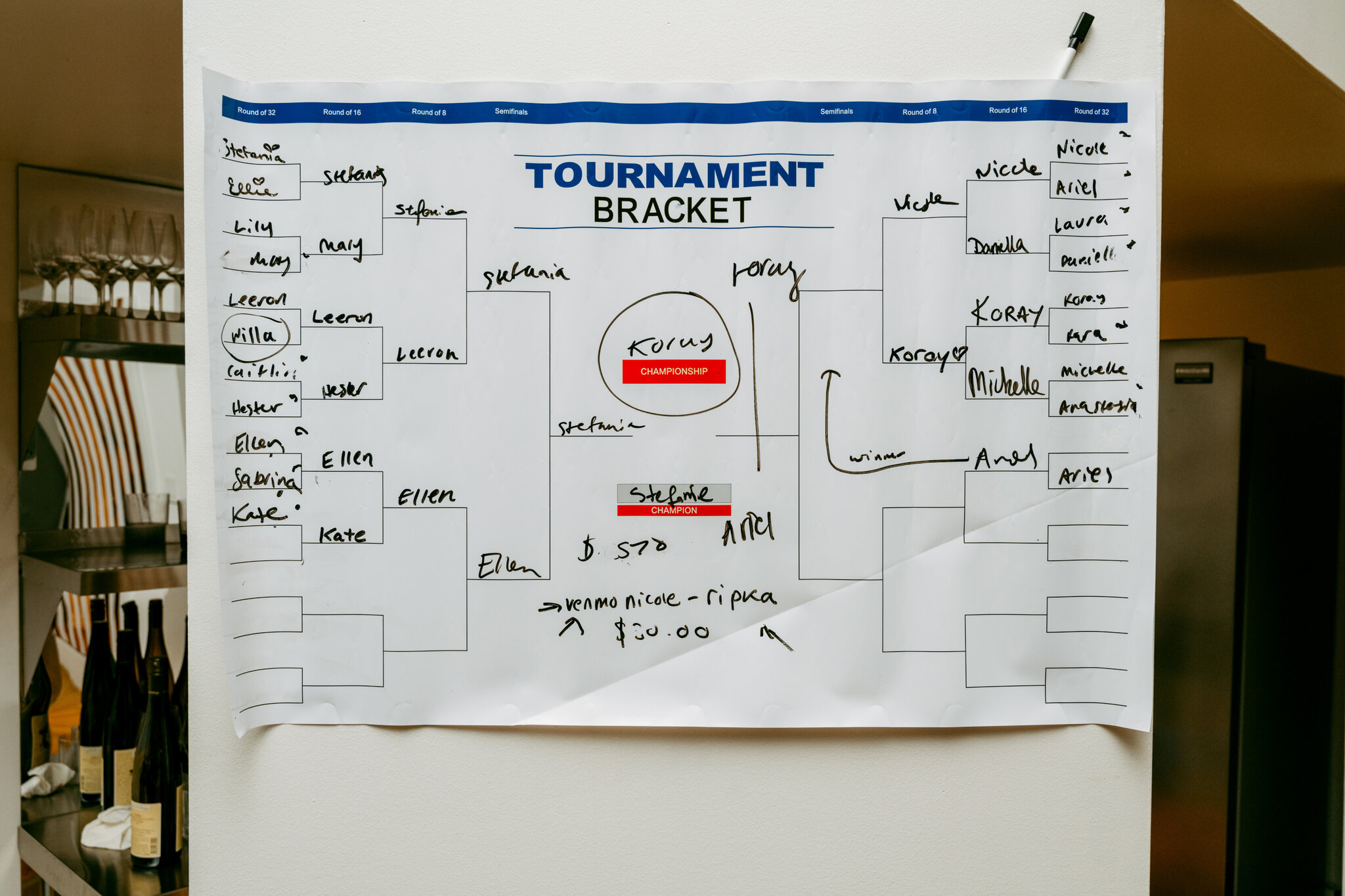
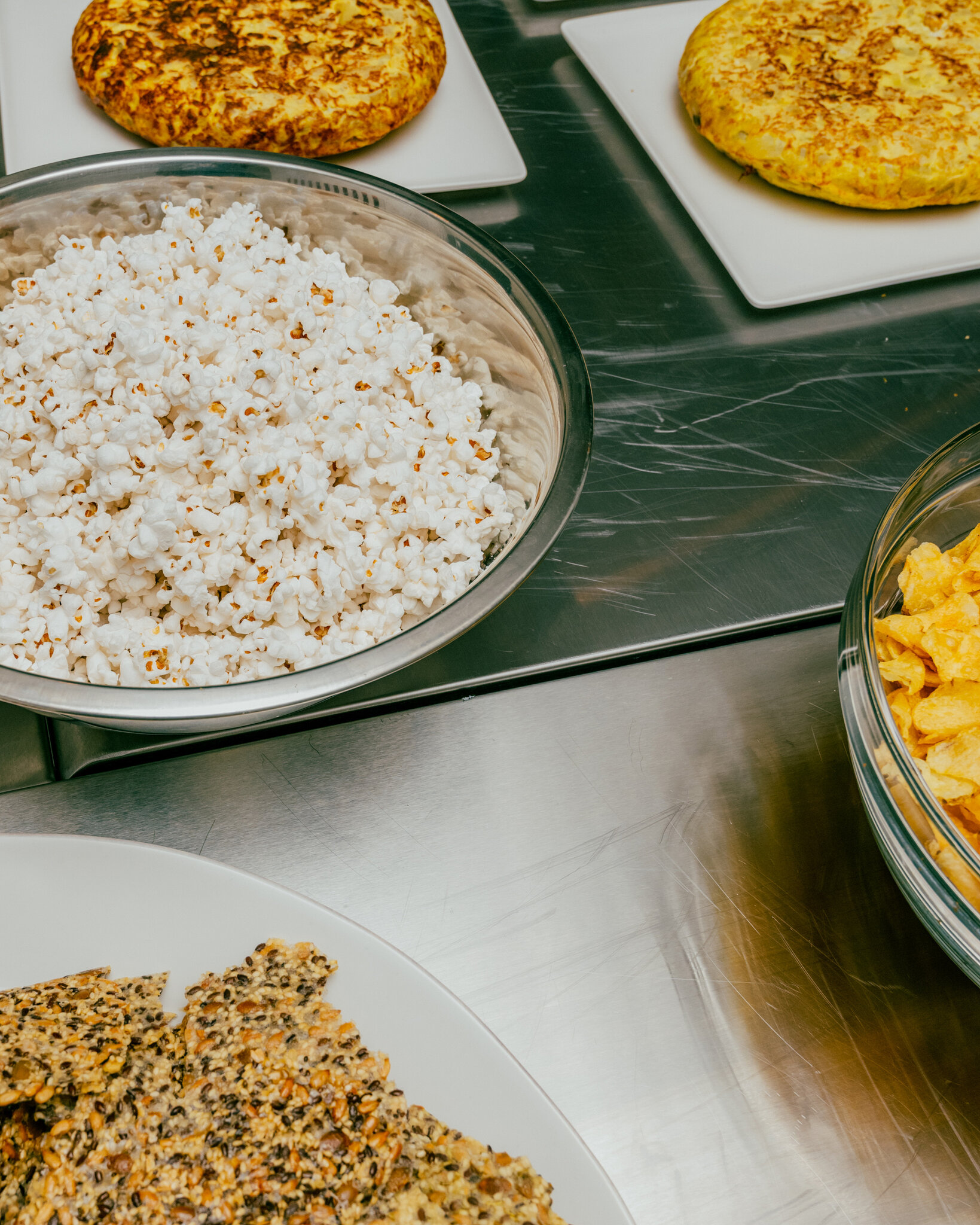

The food and drinks:
When it comes to sustenance, “expedience” is the name of the game, according to Bortolami. On Valentine’s Day, tortillas from the SoHo tapas restaurant La Boqueria and bread from the TriBeCa farm stand Rigor Hill were on hand to soak up alcohol and keep players focused. Popcorn and chips were available for nibbling, while mezcal, La Croix, natural wine and kombucha flowed freely. Although the space is generally well stocked, the evenings are technically B.Y.O.B.B.B. — bring your own beverage and backgammon board.
The finals:
The recent tournament came down to four people: Ripka, Swieskowski, Bortolami and the architect Koray Duman, 46, one of the few men in attendance, who grew up playing backgammon in his native Turkey. In a cruel twist of fate for L.B.B.L., the man won — but he promised to spend at least some of his winnings buying drinks for his lesbian friends. Rines, speaking over the phone after the event, shared a theory about why backgammon is so beloved by the art world, or at least this corner of it: “It’s kind of the same as art dealing,” she says. “It’s about risk, placement, trying to project into an unknown future. You can travel easily with it. It includes money. It’s quick and sexy.”




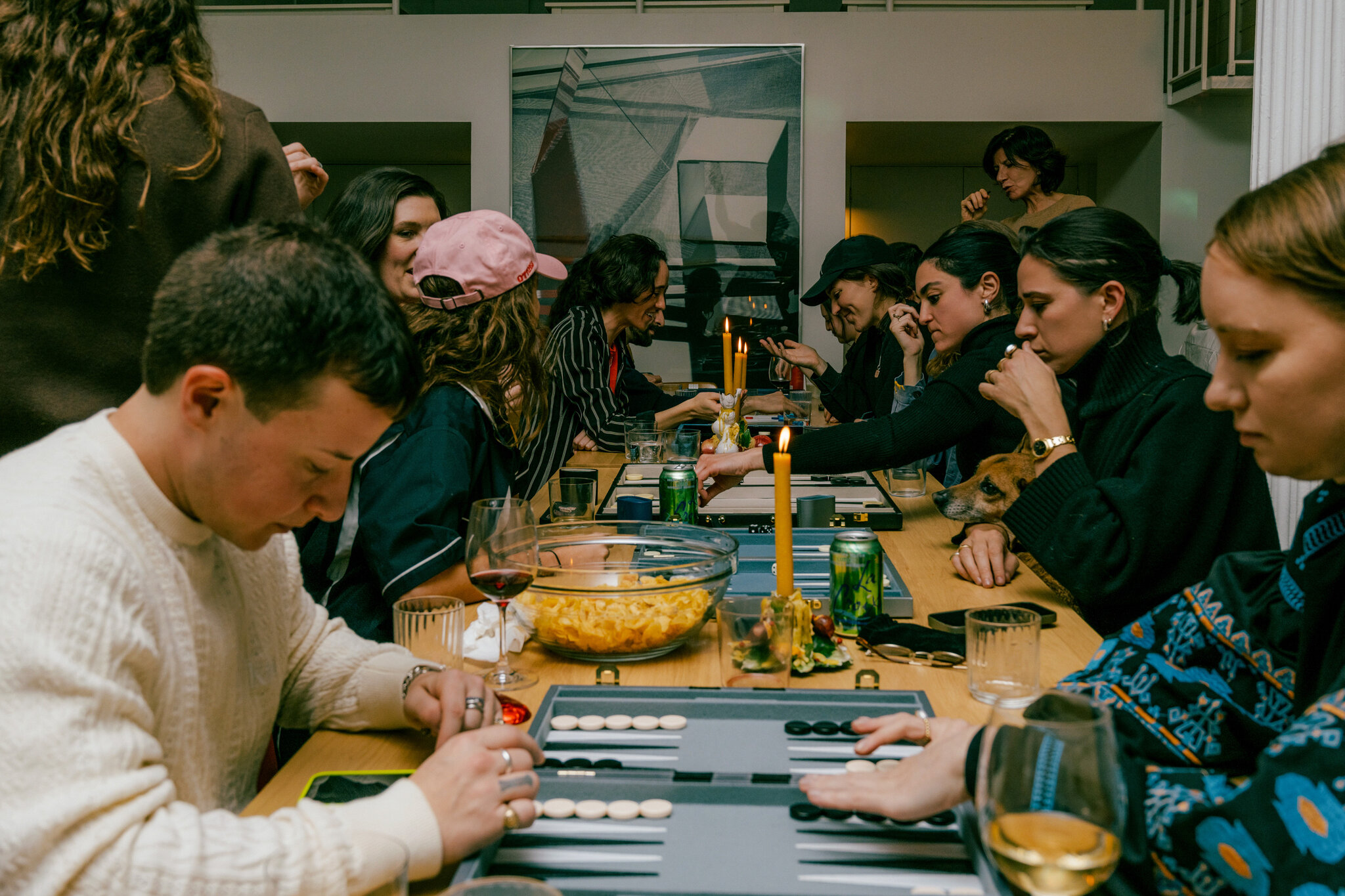 Games underway at the Valentine’s Day edition of the Lesbian and Bisexual Backgammon League, or L.B.B.L., held at Bortolami Gallery in New York’s TriBeCa neighborhood. Photograph by DeSean McClinton-Holland.
Games underway at the Valentine’s Day edition of the Lesbian and Bisexual Backgammon League, or L.B.B.L., held at Bortolami Gallery in New York’s TriBeCa neighborhood. Photograph by DeSean McClinton-Holland.